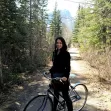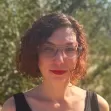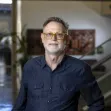Exclusives
BLOG POST
International Walk to School Day/ Livable Streets Education Invade Washington Square
<p> Did you know that yesterday was International Walk to School Day? While many communities may have let this important public awareness opportunity pass by, New York City public school students were out in full force. Perhaps one would expect nothing less in a city where 80% of students already walk to school (transit trips require walking, too!). </p>
FEATURE
A Backyard Battle: Trials of a Garden-Variety NIMBY
Nandita Godbole advocates for parks and greenspaces around Atlanta. But when faced with a struggle over keeping her own quarter-acre backyard open and free, she found she was powerless.
BLOG POST
Municipal Vaporware: Why NYC's Data Mine is A Data Dump
This morning, Mayor Mike Bloomberg unveiled New York City's long-awaited Big Apps contest. Big Apps seeks to promote the Internet industry in the Big Apple (it's sponsored by the New York City Economic Development Corporation) and make local government more transparent.<p>I've been following the evolution of open data initiatives at the municipal level for about a year now, and was really hoping that New York was going to set the bar for future efforts across the country. It doesn't. In fact it's hard to understand why some notable local tech superstars like investors <a href="http://www.avc.com/">Fred Wilson</a> and <a href="http://www.betaworks.com">John Borthwick</a> would sign on to such a lame effort.</p>
BLOG POST
Visiting Planning Schools: What (Not) to Do
<p> The fall is high season for school visits from prospective students. I am a great believer in doing this remotely—while some greenhouse gases are generated by a Google search it is far less than a plane ride to a distant campus. I suggest visiting schools only after you have been admitted (and not even then if you don’t have a really crucial question that can only be answered on site). However, if you can’t bring yourself to even apply to a school in a place you’ve never visited, and promise to buy carbon set asides, a tour may be worth it. The following tips can help you make the most of the school. </p>
FEATURE
REVIEW: My Kind of Transit: Rethinking Public Transportation in America
Far from a boring treatise on the need for public transit, <em>My Kind of Transit</em> is an appeal on behalf of the emotional factors that make most transit repulsive and a select few forms enjoyable and uplifting.
BLOG POST
Planning for the Anthropocene by Candlelight
<!--StartFragment--> <p class="MsoNormal"> The 2009 <a href="http://www.niagarafalls2009.ca/english/index.htm">Canadian Institute of Planners conference in Niagara Falls</a> ended on a remarkable note.<span> </span>A talented speaker and unforeseen circumstance converged brilliantly to demonstrate both the nature of the crises we are facing, but also the resilience we will need to address them.
FEATURE
Creating Neighborhood Capital from Strip Malls
Strip malls are in virtually every American city, but they're rarely an important part of those cities. Ava Bromberg says they can be. Her idea is to turn strip malls into community-owned hubs that generate capital within their neighborhood and keep it there.
BLOG POST
Rethinking Lower Manhattan: What If?
<p> Since its founding in the mid 1990s, Alliance for Downtown New York has long been one of the world's leading business improvement districts. This non-profit organization has presided over the reinvention of New York's historic Financial District as a thriving 24-hour live/work district, while retaining a respectable share of the city's financial services sector. The Alliance built a network of Wi-Fi hotspots that lit up nearly every major public space in the district - not just outdoor locations like Bowling Green and City Hall Park, but also indoor atria like the Winter Garden and 60 Wall Street.
BLOG POST
"Dreams From My Father," A Planner's Perspective
<p style="margin: 0cm 0cm 10pt" class="MsoNormal"> <span style="font-size: small; font-family: Calibri">I recently read President Obama’s autobiography, “Dreams From My Father.” It is well written and insightful. Obama uses personal stories to explore issues of identity, race, class, politics, power, and what it means to be ‘United Statesian.’ <span> </span>Let me share some observations about transportation and land use planning issues mentioned in the book.</span> </p> <p style="margin: 0cm 0cm 10pt" class="MsoNormal"> <span style="font-size: small; font-family: Calibri"><img src="http://bayareashows.today.com/files/2008/06/dreams_from_my_father.jpg" alt="Dreams from my Father" title="Dreams from my Father" width="182" height="305" /> </span> </p>
FEATURE
Time for HUD to Rethink Rental
HUD needs to rethink its emphasis on home ownership and refocus on rentals, argues John Kromer of the Fels Institute of Government.
BLOG POST
A Middle Ground In The Bag Wars
<p> <span><span style="font-size: x-small">The San Jose City Council is considering a proposal to ban plastic bags and most paper bags in supermarkets, out of concerns about the greenhouse gases used to manufacture them and about the waste from discarded bags. But this policy might create as many environmental problems as it solves. <br /> <br /> In a city without disposable bags, shoppers who seek to buy large amounts of groceries will have to drag around an army of nondisposable containers. For drivers, this is not a big deal. Susie SUV can always find space for dozens of nondisposable bags in her truck. And because Susie’s bags can stay in her truck forever, she will always be able to make impulse purchases without difficulty. <br />
FEATURE
Let's Teach Children Planning
Planners often encounter ineffective public participation because of the fact that citizens often are not taught planning skills in school, says Michael A. Rodriguez.
BLOG POST
Ow! That hurt! Or: The Start of Planning School, Year Two
<p class="MsoNormal"> Forgive me Olmsted, for I have sinned. I have strayed. I have coveted. I have had doubts. </p> <p class="MsoNormal"> I have thought about kicking urban design to the curb like a mangy puppy. </p>
FEATURE
A Ride on Dubai's New Metro Rail System
The new Dubai Metro rail system recently began operations in the desert city. Christopher Corbett, an American planner who's been living and working in Dubai, takes us on a visual tour.
BLOG POST
The Social Life of Traffic
<p> Traffic is essentially "an engineering issue," says author Tom Vanderbilt. "But there's also a layer of culture."<br /> <br /> That layer of culture determines, to a large extent, how traffic can become a problem. This idea is explored in Vanderbilt's 2008 book <a href="http://www.amazon.com/gp/product/0307264785?ie=UTF8&tag=planetizen&linkCode=as2&camp=1789&creative=9325&creativeASIN=0307264785" target="_blank" title="Traffic, by Tom Vanderbilt - on Amazon">Traffic: Why We Drive the Way We Do (and What It Says About Us)</a>, a <a href="/books/2009" target="_blank" title="Planetizen Top Books 2009">Planetizen Top Book</a> of the year. He recently expanded on that idea for a discussion about traffic put on by <a href="http://www.zocalopublicsquare.org/" target="_blank" title="Zocalo Public Square">Zocalo Public Square</a> in (where better?) Los Angeles.
BLOG POST
Accessibility-Based Planning
<p style="margin: 0cm 0cm 0pt; line-height: normal" class="MsoNormal"> <span style="font-size: small; font-family: Calibri">Should society encourage parents to <a href="/node/40737">drive children to school</a> rather than walk or bicycle? Should our transportation policies favor driving over walking, cycling, ridesharing, public transit and telecommuting? Probably not. There is no logical reason to favor automobile travel over other forms of accessibility, and there are lots of good reasons to favor efficient modes, so for example, schools spend at least as much to accommodate a walking or cycling trip as an automobile trip, and transportation agencies and employers spend at least as much to improve ridesharing and public transit commuting as automobile commuting.
FEATURE
SPECIAL REPORT: A Lobbying Free-For-All
Thousands of special interest groups are competing to influence the new transportation bill. Reporter Matthew Lewis sheds light on the most significant players, in an extensive report from the Center for Public Integrity.
BLOG POST
"A Paradise Built in Hell" Offers Lessons in Disaster Planning
<p> In her new book, <a href="http://www.amazon.com/Paradise-Built-Hell-Extraordinary-Communities/dp/0670021075/ref=sr_1_1?ie=UTF8&s=books&qid=1253033030&sr=8-1"><em>A Paradise Built in Hell: The Extraordinary Communities That Arise in Disaster</em></a>, journalist and essayist Rebecca Solnit describes a phenomenon that is rarely mentioned in the context of disaster preparedness: the spirit of caring -- even joy -- that can emerge in the face of calamity.
BLOG POST
Stress and the city, part 2
<p class="EC_MsoNormal"> Not long ago, I posted on what makes some cities more stressful than others.<span> </span>(See <a href="/40441" target="_blank">http://www.planetizen.com/node/40441</a> ).<span> </span>In that post, I remarked that the ideal objective indicia of stress (resident surveys on crime, illness, etc.) often do not exist for most cities. </p>
BLOG POST
An Interview with the Chinese Premier
<p> This interview below with the Chinese Premier offers a preview of the challenges and opportunities that will unfold at the </p> <p> December 2009 UN Climate Conference (see <a href="http://en.cop15.dk/?gclid=CI-ImOyB8JwCFYwwpAodNSUfjQ">http://en.cop15.dk/?gclid=CI-ImOyB8JwCFYwwpAodNSUfjQ</a>) </p> <p> Here is the interview, <a href="http://www.chinadaily.com.cn/opinion/2009-09/14/content_8687301.htm">http://www.chinadaily.com.cn/opinion/2009-09/14/content_8687301.htm</a> </p>
Caltrans
City of Fort Worth
Mpact (founded as Rail~Volution)
City of Camden Redevelopment Agency
City of Astoria
City of Portland
City of Laramie
Urban Design for Planners 1: Software Tools
This six-course series explores essential urban design concepts using open source software and equips planners with the tools they need to participate fully in the urban design process.
Planning for Universal Design
Learn the tools for implementing Universal Design in planning regulations.


































